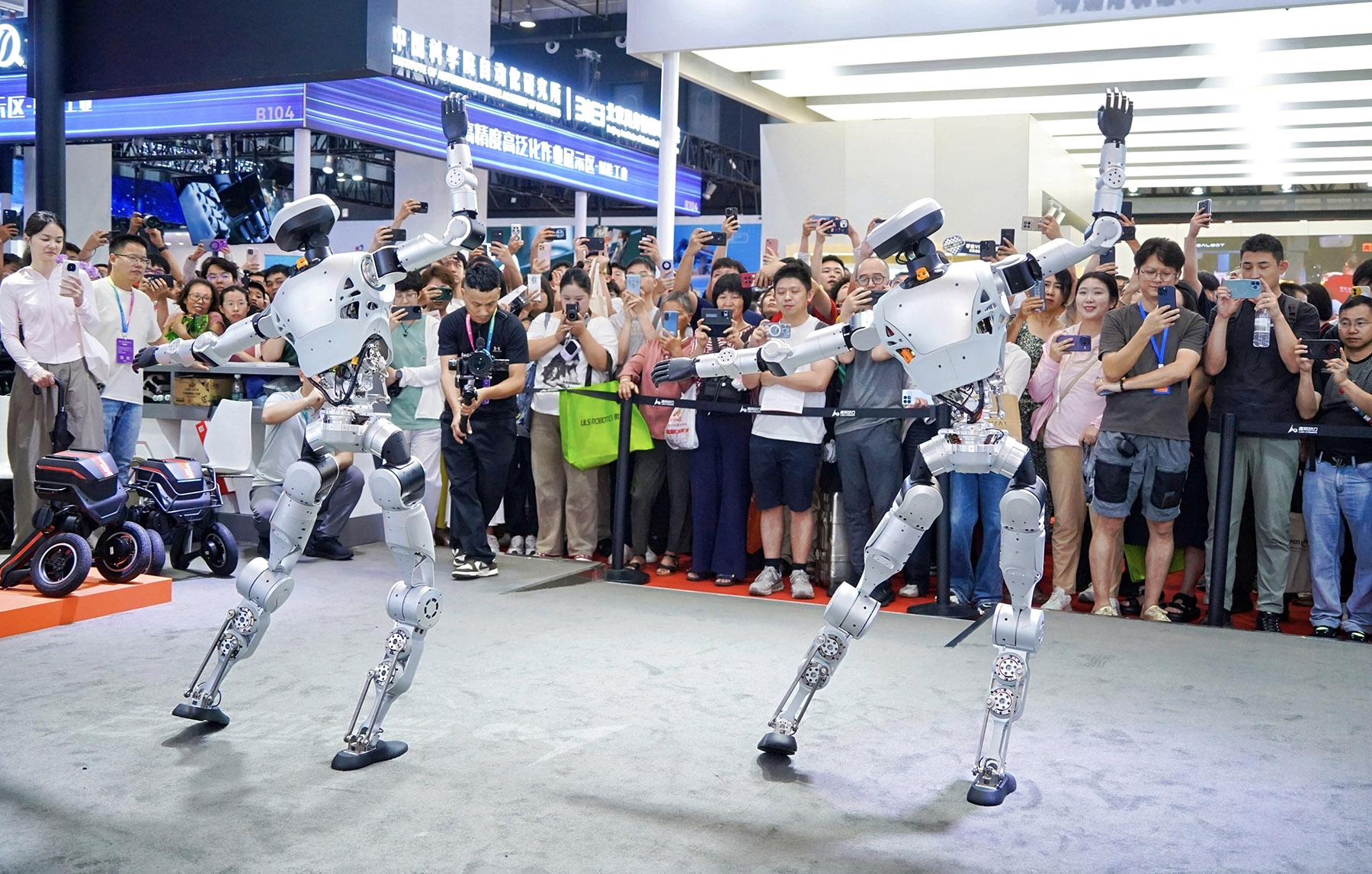Event attended by 50 humanoid robot manufacturers to unveil latest models

Forget static displays. At the 2025 World Robot Conference held in Beijing earlier this month, robots traded blows in boxing rings, strategized over games of Gomoku, and meticulously demonstrated intangible cultural heritage crafts. These weren't distant concepts, but dynamic, interactive machines accelerating their integration into the fabric of daily life.
The event served as a powerful testament to China's surging robotics prowess, showcasing a future where humanoids play an increasingly important role in daily life and work.
The scale was staggering — a record-breaking 50 humanoid robot manufacturers unveiled their latest models and solutions at the conference.
READ MORE: AI powering China's industrial evolution
China's ambition is underpinned by solid progress. A KPMG report revealed that China leads the world with nearly 6,000 humanoid robot patent filings in the past five years.
Investment has skyrocketed, with industry financing soaring to 7.23 billion yuan ($1 billion) in 2024 from 1.58 billion yuan in 2020 — a blistering 35.6 percent compound annual growth rate.
The growth has just begun and exponential growth is yet to come, experts said, emphasizing a pivotal shift: advanced technologies like high-precision force control sensing are no longer optional luxuries, but essential foundations.
"This sense of touch is fundamental," said Liu Wuyue, founder of Link-touch, a Chinese startup, underscoring the critical role of force sensors. "Without them, delicate operations are nearly impossible and physical interaction is core."
His company is breaking barriers in specialized six-dimensional force sensors for humanoids through innovations in elastomer design, high-response embedded circuits and advanced algorithms. "This technology fundamentally determines whether a robot remains a crude machine or becomes capable of performing truly 'fine work'," he explained, highlighting the quest for human-like dexterity.
Liu sees China as being uniquely positioned to lead in component development, citing massive customer demand, unparalleled supply chain advantages and fertile innovation ecosystems. The astonishing pace — "send drawings in the morning, receive parts by evening" — drastically lowers development costs, accelerating breakthroughs, Liu said.
Beyond mechanics, the emotional connection emerges as the next frontier. "In high-interaction scenarios like elderly care, education and reception, robots with superior emotional expression offer warmer, personalized and more acceptable services," said Cao Rongyun, founder of AnyWit Robotics, a startup based in Hefei, Anhui province. He sees expressive interaction as key to boosting maturity and adoption. "Integrating facial expressions and micro-expressions will revolutionize human-robot interaction."
ALSO READ: China's Unitree cuts robot prices for wider mkt penetration
Meanwhile, AgiBot, China's most-valued embodied intelligence startup, is ramping up efforts to explore overseas markets, according to Yao Maoqing, a partner at AgiBot and president of its embodied intelligence business unit.
AgiBot is valued at 15 billion yuan and operates Shanghai's first dedicated mass-production facility for humanoid robots.
"We are now deploying strategically in North America, Europe, the Middle East, Japan, South Korea and Southeast Asia," Yao said. "Our strategy relies on localization through deep partnerships with local players, enabling us to achieve genuine globalization."
Yao said AgiBot began product deliveries to overseas customers earlier this year.
Drawing a parallel with historical industry trends, he said: "We've consistently observed across numerous sectors that products, which successfully emerge from China's intensely competitive domestic environment, often achieve rapid expansion internationally. This proven dynamic is a key strategic focus area for AgiBot."
Contact the writer at masi@chinadaily.com.cn


